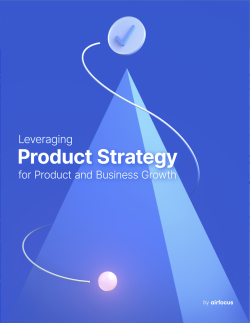5Ws and 1H framework
Meaning of 5Ws and 1H
5Ws and 1H definition
The 5Ws and 1H technique is a simple strategy used by investigative journalists, detectives, and researchers to collect a complete and accurate story. The idea behind this method is that if you can identify the answers to these six questions, you should have a full version of events. These six questions are: what, why, when, where, who, and how.
The 5Ws and 1H framework is a super simple but seriously effective method for collecting information. It's an easily memorized list that journalists and other researchers can reflect on whenever they're collecting information in the heat of the moment.
The 5Ws and 1H method is also helpful for delivering information. When writing or providing a story, addressing the answers to each of these questions can give your audience a holistic sense of the story you're sharing.
Why are 5Ws important?
The 5Ws are important because they effectively touch upon the core components of a story. If you can answer these five questions, then you likely have a solid grasp of the story at hand. It also provides you with a framework for adding details to your story, because you already have the foundation to get the core story across.
You can also adapt the 5Ws and 1H technique to project management. This is particularly useful for focusing on a complex project and ensuring that you and everyone on your team share a common vision. Who are your stakeholders, why are you developing this product, how are you going to go about it, what is the scope of your project, etc.?
Examples of questions
What examples
What is the budget for your project?
What does your target audience want?
What will you need for your project to succeed?
What risks is your project assuming?
What are the milestones you need to hit?
Why examples
Why are you developing this product?
Why does your target audience want this product?
Why is your product running into issues?
Why does this product make sense for your brand?
Why have you chosen each member of your team to work on this?
When examples
When should this project be completed?
When does each milestone need to be completed?
When will product testing need to take place?
When should you transition product development to product support and maintenance?
Where examples
Where will your product be deployed?
Where will you be working on your project?
Where will your users be using this product?
Where is this product going to be manufactured?
Where does your product need to function?
Who examples
Who is going to be using this product?
Who will be working on the development of this project?
Who are your stakeholders?
Who will benefit from this product?
Who are your current and potential competitors?
How examples
How will your product be developed?
How is this product going to work?
How long is this product supposed to last?
How will your target user benefit from using this product?
Who, what, when, where, and why
Once your team deeply understands user pain points and wants, they can build the product in a way that offers real value to the customer. This is why the 5W’s framework is so effective — it digs deep into the core of a product and its users.
Who?
The “Who?” represents the people involved in the product and helps teams frame the project in a way that covers everyone involved. This includes stakeholders, the team, customers, and product owners. When you can answer “who,” you have more accountability. Knowing “who” helps you trace any issues back to the right people to solve the problem. It also helps you get a solid grasp on your target customers and the reasons why they want the product or feature.
What?
You can almost think of the “What?” as a product definition stage. It sets expectations for the entire project and defines key problems that need solving or features that should be included. Answering the “what” is vital for setting a scope for the problem you’re trying to solve and the solution you’re working to create. A concrete understanding of both can reduce the risk of wasting time on non-essential tasks outside that scope.
When?
The “When?” tasks us with estimating timeframes. It can be helpful to save this question for last because the other stages will define the processes you need to estimate timeframes for. This stage helps us communicate and set expectations for interested parties. Estimating timeframes helps you determine urgency and priorities. You’ll identify high-priority goals and focus on them first instead of allocating resources to tasks of less importance. You can gradually work through tasks and accomplish objectives in order of value to the product. Understanding “when” also helps save you from missing out on opportunities by taking too long to complete the product or feature.
Where?
This used to be a simple question to answer. However, it's a little tougher to define in this age of remote work and hybrid teams. Where we deploy a project may be a far cry from where it was created. To keep the team aligned and maintain productivity, asking “Where?” can be extremely useful. The “where” provides much-needed context about the problem that users face, specifically where they encounter it and how often. This is essential for formulating an effective solution that exceeds their expectations. Answering “where” also allows you to delve deeper into the problem. For example, ask where customers will use your solution and how regularly they will need to use it.
Why?
Some teams will start blindly working on projects using only technical specifications. What tends to follow is a lifeless product that ticks the boxes but fails to provide value to the user. Think about the other W questions and their answers. Within those answers is why you’ll be creating the product. Customer needs, business needs — your “Why?” can be anything as long as you know what that “Why?” is. “Why” is the most important question in the 5Ws and H technique. You must know why you need to solve the customer’s problem before working on it.
If you don’t get the right answer for this, you could go on to develop the wrong product or feature. That would be an expensive mistake that could disappoint customers and harm your company’s reputation.
How?
The “how” helps you understand how your product will work, how it differs from your competitors’ products, how you’ll market it, and how you’ll deal with any issues after launch. Get this right, and you’ll know how to position it, as well as how to handle user queries.
When should product managers use the 5Ws and 1H technique?
The 5W’s and 1H framework can be used in countless situations, including journalism, research, and police investigations. Even in a product development context, there are many ways to use this framework. The idea is to gain a deep understanding of the task ahead using insights and other key information.
While Product Managers can use the 5Ws and 1H framework at any stage of the development process, it can be most beneficial during product definition. During this stage, the team is trying to figure out what they are building, who they’re making it for, when it should be released, where it will be used, and why they’re building it. Does that sound familiar?
By asking the 5 W questions during the product definition stage, the team can understand what they’re setting out to achieve. They will be able to identify key factors, align with the product vision, and stay focused on the matter at hand. Once they’ve figured out the W��’s, they can work on how they will create the product.
When should product managers NOT use the 5Ws and 1H?
You shouldn’t use the 5Ws and 1H technique when you need to ask more questions to get a comprehensive overview. Developing an in-depth understanding of what you need to achieve is critical, and this technique may not help you dig deep enough.
Examples of 5W and 1H in different contexts
The 5Ws and 1H framework can be universally useful. You can use these questions in a variety of different industries and contexts. They’re a handy tool for anyone who needs to:
Communicate a story, plan, or concept
OR
Clarify their thoughts and strategy
Here are some places where the 5W and 1H framework is commonly used, along with some example questions.
Journalism
Journalists famously use the 5W and 1H framework to gather the right facts about any given situation and effectively communicate those facts to their readers.
In journalism, the 5Ws are:
Who: Who is involved?
Where: Where did it happen?
What: What happened?
When: When did it happen?
Why: Why did it happen?
And the 1H is:
How: How did it happen?
Answers to these questions should appear in any article a journalist writes. Ideally, a journalist will include these answers as close to the beginning of an article as possible to convey all of the key information readers need. They then use the rest of the article to expand on the who, what, why, and how.
Research writing
You can use the 5W 1H framework to help you research a topic and then cohesively summarize that research.
In research writing, the 5Ws are:
Who: Who conducted the research? Who funded the research? Who stands to benefit from the research?
What: What does the research involve? What question were you trying to answer?
Where: Where did the research take place?
When: When did the research take place? When did it start, and when did it finish?
Why: Why was there a need for this research?
And the 1H:
How: How was the research conducted?
Answers to these questions will appear throughout a research paper. But you should also include all of them in your abstract too. This ensures readers get a short but comprehensive summary explaining what your research is all about.
Building a product roadmap
The 5Ws and 1H can also help when building a product roadmap. They help you better develop your plans for your product.
When building a product roadmap, the 5Ws are:
Who: Who is your user persona? Who is your product intended to help?
What: What is your product vision? What impact do you want your product to have?
Where: Where do you plan to start? Where will you focus next?
Why: Why do you think your product will succeed?
When: When will you launch the product? When is the best time to release it to market?
And the 1H is:
How: How will you develop your product? How will you allocate resources? How will you manage timeframes and budgets?
By addressing all of these questions when developing a product roadmap, teams clarify their mission and their approach. And by treating the 5W and 1H framework as a checklist, you can be confident that all major issues have been considered before moving forward.

General FAQ

Glossary categories
Create effective product strategy

Experience the new way of doing product management








